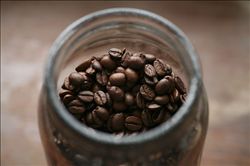Introduction to the characteristics of coffee flavor description in Hadassen Coffee Garden in Ecuador

Coffee was introduced to Ecuador in the early 19th century and became the country's most exported product in the 1970s. But the development of the country's coffee industry has been in trouble over the past three decades. Coffee cultivation is undermined by excessive deforestation and the increase in diseases and insect pests. The government gives very little support to farmers, but there are still some high-quality coffee beans. For coffee, the most important thing is to understand the soil and altitude in which it grows will have a significant impact on the quality of coffee products. Alpine coffee from Ecuador is produced at an altitude of about 1000-2000 meters. Coffee from different soils has different tastes. Its taste is very interesting, a little sour and bitter, coupled with aromas and sweetness of fruit, grass and chocolate, Ecuadorian alpine coffee is a very good choice for making ESPRESSO and drip coffee, because you can taste its strong taste.
Ghana Pagos coffee is produced at an average altitude of 300 meters above sea level. It has different tastes, it is not so sour and bitter, it tastes very good, it is mild, it tastes slightly sweet and floral, and it is very easy to taste. It is a very good choice for guests who are just starting to drink coffee. For drip-filtered coffee that wants to make and taste pure aroma and taste, I recommend that you try the coffee from Canapagos Island, which comes from Ecuador's new champion barista David Mino, who carefully concocts the original Ecuadorian coffee on the spot. Lead friends on the scene to enjoy a trip to the tip of the Ecuadorian tongue.
From Galpagos coffee with surprising soft taste, to sour and bitter alpine coffee from LOJA, Ecuador, to softer Ghanaian pugs coffee mixed with strong LOJA coffee, we also introduced Vilcabamba alpine coffee produced at 1780 meters above sea level, and finally showed you the aroma of chocolate and fruit. A bit bitter and sour, Loja Blend's top coffee Arabica was first introduced to Ecuador (Ecuador) in 1952, and its coffee is of good quality, especially the coffee harvested in early June. Ecuadorian coffee beans can be divided into two varieties: Galapagos and Gigante, both of which have the characteristics of large granules and heavy weight. Ecuadorian coffee can be divided into first class (No.1) and super excellent (ExtraSuperior) according to its quality. They are mainly exported to the Nordic countries of Scandinavia.
The main problem facing coffee producers is their efforts to maintain stable quality. The coffee here is generally well-balanced and refreshing, with a unique aroma.
Ecuador is one of the few countries in South America that produces both Arabica coffee and Robbins coffee. However, as the land suitable for Arabica coffee trees is decreasing, the production of Robbins coffee is gradually increasing. The best Arabica coffee comes from the Andes, especially the Chanchagu Valley (ChanchamgoValley), which is divided into two mountains, extending from south to north to central Ecuador.
Important Notice :
前街咖啡 FrontStreet Coffee has moved to new addredd:
FrontStreet Coffee Address: 315,Donghua East Road,GuangZhou
Tel:020 38364473
- Prev

Introduction to the flavor description of moderate and mellow coffee varieties in Santa Cruz, Ecuador
When Thomas and the crew landed on the island, they were frantically looking for water and were so thirsty that they squeezed juice from the fat leaves of the cactus to drink. At last a source of water was found in a rocky gully. Thomas attributed it to the gift of God, because it was good Friday, and they had piously celebrated mass before they set out in search of water. But Thomas will never
- Next

Introduction of boutique coffee beans from San Pedro Manor Coffee area of Puerto Rico with complete flavor
The Spanish-American War of 1889 ended with the victory of the United States, ending more than 400 years of Spanish rule over Puerto Rico. The demand for sugar in the United States has increased significantly, while the hurricane destroyed most coffee plantations, and the coffee industry in Puerto Rico was hit hard by natural and man-made disasters. In the 20th century, the national economy of Puerto Rico developed rapidly, with the strong support of the government and the local government.
Related
- Does Rose Summer choose Blue, Green or Red? Detailed explanation of Rose Summer Coffee plots and Classification in Panamanian Jade Manor
- What is the difference between the origin, producing area, processing plant, cooperative and manor of coffee beans?
- How fine does the espresso powder fit? how to grind the espresso?
- Sca coffee roasting degree color card coffee roasting degree 8 roasting color values what do you mean?
- The practice of lattes: how to make lattes at home
- Introduction to Indonesian Fine Coffee beans-- Java Coffee producing area of Indonesian Arabica Coffee
- How much will the flavor of light and medium roasted rose summer be expressed? What baking level is rose summer suitable for?
- Introduction to the characteristics of washing, sun-drying or wet-planing coffee commonly used in Mantenin, Indonesia
- Price characteristics of Arabica Coffee Bean Starbucks introduction to Manning Coffee Bean Taste producing area Variety Manor
- What is the authentic Yega flavor? What are the flavor characteristics of the really excellent Yejasuffi coffee beans?

